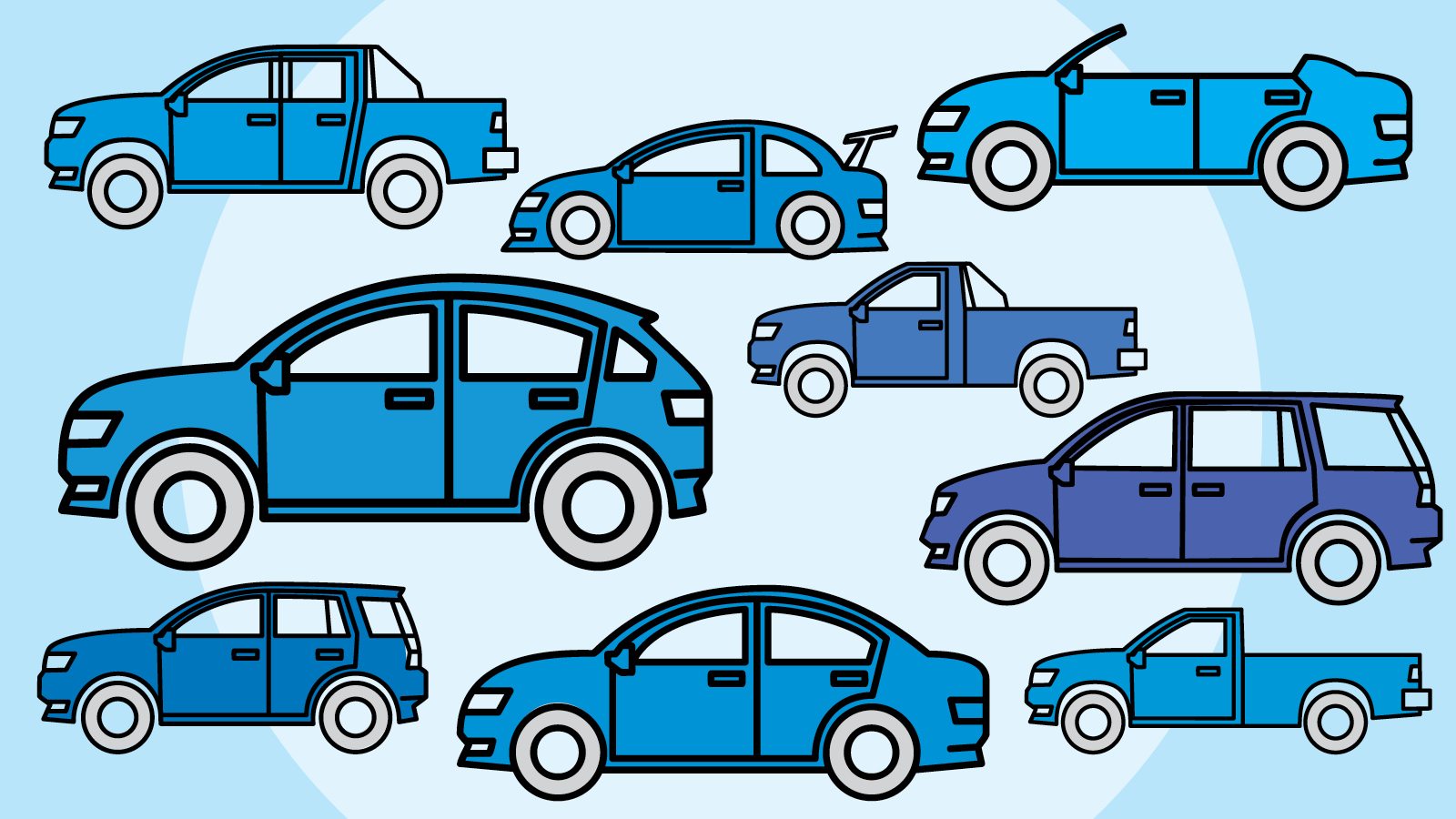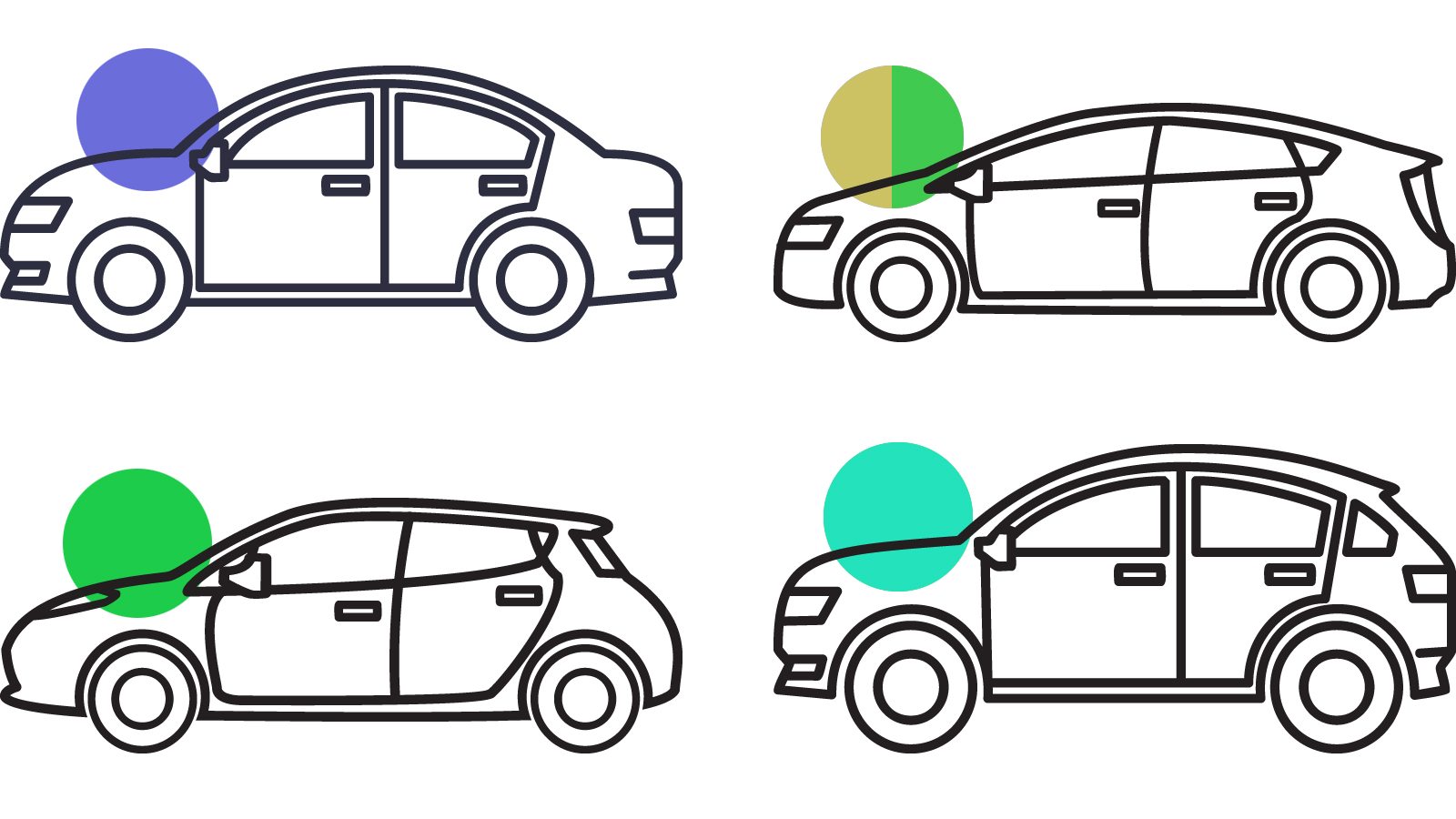The choice used to be so easy: big car, little car or truck? But today’s roads are bumper to bumper with various sizes and styles, makes and models. Your first decision is what type best suits your needs and wants.
Compact/sub-compact: Easy to drive in the city, best fuel consumption and ideal for those looking to go from A to B. Small doesn’t mean less safe though: All cars are built to strict safety standards. The Honda Civic and Toyota Corolla, both compacts, are the most popular cars in Canada. A Hyundai Accent is a sub-compact.
Full-size/mid-size: Larger and more roomy, but also more thirsty for gas. A Chevrolet Impala is considered full-size; a Ford Fusion is mid-size.
Sedan: A four-door car, comfortable for two or three passengers in the rear seat.
Coupe: A two-door car with either one or two rows of seats; more sporty but not so accessible for rear-seat passengers. Consider a coupe if you usually have just one passenger.
SUV: Roomier than a car and designed to be driven off-road (though few ever really do). Drivers like them because the taller ground clearance lets you sit up higher, and they’re a nice family alternative to minivans. The GMC Yukon remains a popular choice.
Crossover: A slightly smaller SUV that’s still taller than a regular car. It’s a good choice for someone who wants a versatile vehicle with easy passenger access and plenty of cargo space. The Ford Edge is a crossover.
Convertible: Usually only comfortable for front-seat passengers; cloth tops are most common, but some hardtops are now available that are quieter and more practical in winter.
Minivan: Large and handy for carrying more than five people and the family dog. One-touch sliding doors are good for loading groceries.
Pickup truck: There are car people and then there are truck people! If you’re farming or building, this one is for you.
ALTERNATIVE POWER
There are alternatives to traditional gas-hungry vehicles. What’s on the market and what’s coming?
Diesel: No longer smelly and not just for trucks. It’s more efficient than gas, cheaper to run and often creates more torque, making it more responsive to acceleration. Most European carmakers now offer diesel-powered cars in North America; BMW’s 328d, for example.
Gas-electric: A special battery is connected to the gasoline engine and kept charged while running. When the car is cruising or being driven gently, the engine turns off and the car drives on its battery power to save gas. The Toyota Prius, now in its fourth generation, is still the best known.
RELATED CONTENT
How to get the best value for your dollar when buying a new car
Electric: Powered only by an electric motor, cars like the Nissan Leaf are peppy and quiet, with a range of about 150 kilometres before needing to be recharged. The $90,000 Tesla Model S can drive up to 400 kilometres before running out of juice.
Hydrogen: It’s a clean, cheap fuel that creates no emissions except water, but the infrastructure isn’t quite there yet—there are no public refuelling stations in Canada, but Hyundai operates one private facility in B.C. As lobbying for additional stations ramps up, expect more hydrogen vehicles to arrive in the coming years.
CONSIDER YOUR OPTIONS
Once you’ve selected your new vehicle, what options do you want? The choices have changed—some didn’t even exist five years ago! Here are a few of the most popular in today’s new cars.
Voice activation: Voice activation learns the sound of your voice and will turn on or off many of the car’s features with just a spoken command. But always be mindful of the road: Voice activation can still be distracting. See page 25 to learn more about the dangers of distracted driving.
Power open/close: Cars, SUVs and minivans often offer the option of power opening and closing for the trunk (or the tailgate for pickup trucks) to keep your hands free. Just press a button and the trunk lid or tailgate will close itself securely. Some vehicles even let you wave a leg under the rear bumper to open the trunk.
Electronic sensors: More common and effective than they used to be, radar and sonic sensors detect other objects and vehicles around the car and can help prevent collisions. Some even help drive the car by keeping it in its lane or parking in a tight spot.
HID headlights: High-intensity discharge bulbs light the road ahead more effectively than standard halogens, but without dazzling oncoming drivers. Automatic dimming lights can also detect an oncoming car and dim the beams without any driver input.
Dual-zone climate controls: This allows both the driver and passengers to set their own heating and AC levels. You can also opt for auto-matic climate controls: In auto mode, the system will fine-tune the temperature to keep everyone comfortable. This can help reduce driver distraction by eliminating the need to fumble with buttons.
RELATED CONTENT
Insuring your vehicle—and other essentials you need before you can get behind the wheel
Heated seats: They used to be a luxury, but they’re much more commonplace today, and are often coveted in Alberta winters. They’re usually available on mid-priced-and-up levels of most vehicles. Some offer heated seats in the rear, too.
Cameras: Backup cameras can help prevent collisions and fender-benders, when used in combination with attentive checks by the driver. By May 2018, they will be compulsory for new cars in Canada. Surround cameras—more common on luxury cars—display everything around the car on a central screen, as if seen from above. Make sure the monitor screen is large enough for your eyesight, as some may be quite small.
DRIVETRAIN 101
When choosing which wheel drive you need (a.k.a. the drivetrain), consider the style of driving you’ll do most: highway, mountains and backcountry, or city.
Front-wheel drive: Often the best choice if you’ve got good winter tires during the cold season and do a lot of city driving. Front wheels pull you through snow and over ice—the weight of the engine is over the driving wheels, which adds bite to the tires. It’s usually less expensive to purchase and repair bills will be cheaper too.
Rear-wheel drive: A good choice for a performance car: The rear wheels push the car forward instead of pulling it, which changes the “feel” of driving the vehicle. It’s a good choice for light-duty trucks: Stability and traction controls keep the front wheels pointed confidently in the right direction by braking them individually, as needed.
Four-wheel drive: Power is available to all four wheels, but in normal conditions it’s only sent to one pair of wheels, usually the back. This saves fuel. When the going gets slippery, through snow, mud or wet roads, the driver can send power to all four wheels. It’s best in extreme conditions and generally found in off-roading vehicles.
All-wheel drive: All four wheels are always available to drive the vehicle, though the ratio varies between front and back. In slippery conditions, power between the four wheels is automatically adjusted by the vehicle’s computer to find the best traction. When equipped with winter tires, it provides good grip in snow and on ice, but it’s heavier, and more costly to buy and repair than two-wheel drive.



